From runway collections to brand campaigns, culture has become a key ingredient in marketing. However, not in ways that feel thoughtful, earned, or respectful. Too often, brands treat culture like a costume or a hashtag. Something to wear for the season, capitalize on and then discard.
But when it’s done right, cultural collaboration becomes something more than a trend—it becomes a mirror, a platform, a form of shared authorship.
Applauding representation is not enough at times. Instead, let’s recognize the rare cases where brands go beyond optics and engage with culture in a way that feels rooted and real. The best cultural partnerships don’t just include communities, they invite them to lead.
Let’s take a look at what exactly the concept of a brand partnership is, and discuss a few examples of brands that got cultural partnerships right.
What Is a Brand Partnership?
At its core, a brand partnership is when two or more companies team up to create something they couldn’t do alone—whether it’s a product, campaign, or experience.
But when done right, brand partnerships are more than just partnering with a celebrity, co-branding, or slapping two logos on a collaboration. The best partnerships tap into shared values, cultural moments, and communities in ways that feel authentic and mutually beneficial. They generate buzz, deepen brand affinity, and sometimes, even shift culture.
Brand Partnerships That Leveraged Culture Effectively
Understanding what successful cultural partnerships look like helps to examine the brands that are already doing it right. These aren’t just collaborations with reach, they’re built with real intention, community input, and creative alignment. From global luxury houses to irreverent language apps, these case studies show how brands can engage culture not just as a backdrop, but as a core part of the strategy. Let’s break down a few standout examples.
1. Duolingo Celebrates Eid
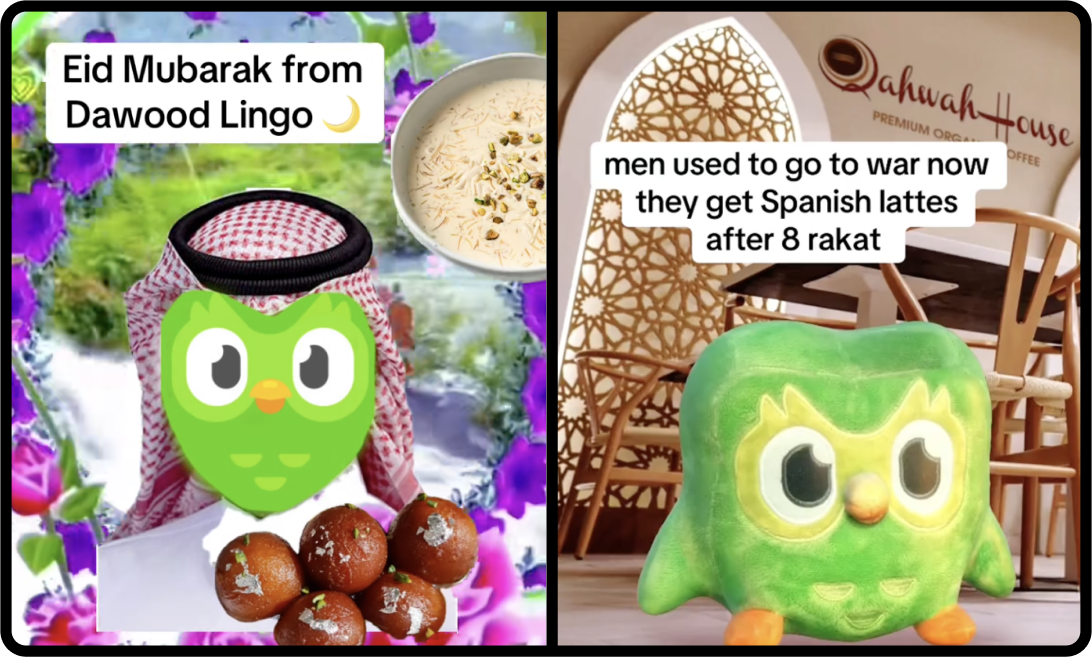
You know them very well. The language app with the infamous bird and often “unhinged” social media strategy, their recent controversial take on being “AI-first” led to the bird “dying” and another rebranding: Duolingo.
Duolingo is always turning heads whether it’s rebranding or presenting the next unhinged marketing trend they have up its sleeve.
Duolingo is always the first to wish Muslims worldwide a happy Eid, the celebration that comes after a successful Ramadan. Duolingo is winning with their inside jokes that only the Muslim community will understand. That includes their “auntie-Whatsapp-made” style Eid videos that are easily shareable or the Qahwa House jokes that only those who enjoy the Yemeni coffee chain will understand.
Sharing these videos with a niche community brings togetherness, especially since Duolingo does not miss a single Eid. It is inviting and makes Muslims all over the world feel obligated to check Duolingo’s social media, or possibly encourage them to do a couple of lessons.
What sets Duolingo apart is its willingness to engage with culture on the audience’s terms, not the brand’s. Duolingo leans into specificity, understanding that niche content often travels further within communities because it feels personal. The Eid campaigns don’t try to educate or oversimplify but participate in the humor, the aesthetics, and the shared experiences, making them feel like a brand that’s part of the group chat, not just an observer.
2. LVMH at the 2025 Osaka-Kansai World Expo, Japan
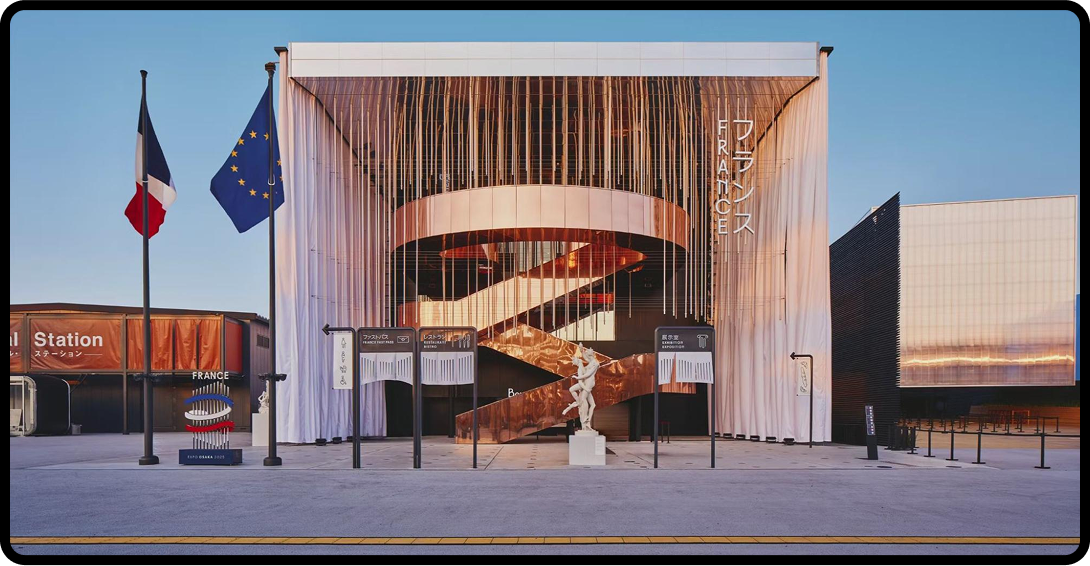
At the 2025 Osaka-Kansai World Expo, LVMH’s (Moët Hennessy Louis Vuitton) presence at the French Pavilion shows a thoughtful and immersive cultural partnership, highlighting the group’s deep-rooted relationship with Japan. Through collaborations with Japanese artists and the integration of traditional craftsmanship, LVMH’s exhibitions honor both French luxury and Japanese heritage.
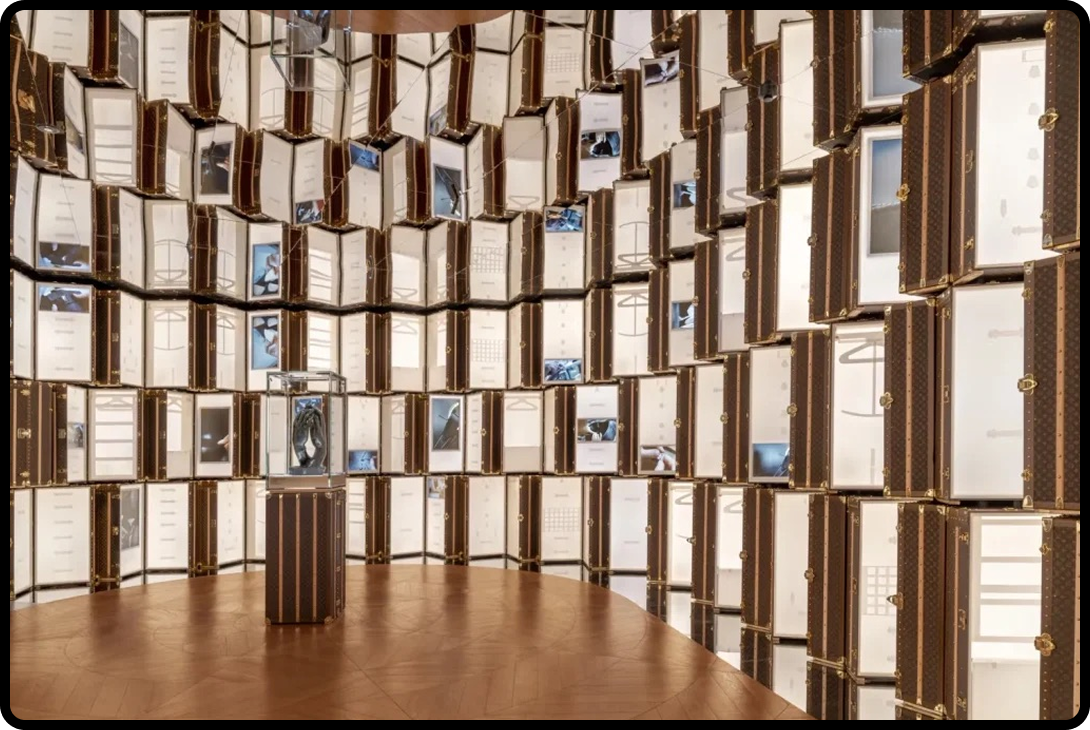
Louis Vuitton presents a dual installation designed by Japanese architect Shohei Shigematsu. The first space features 85 stacked trunks, each displaying videos of artisans at work, creating a “library” of craftsmanship. The second space showcases a 6.6-meter globe constructed from white Courrier Lozine trunks, accompanied by a video installation by Japanese artist Daito Manabe, symbolizing the fusion of tradition and innovation.
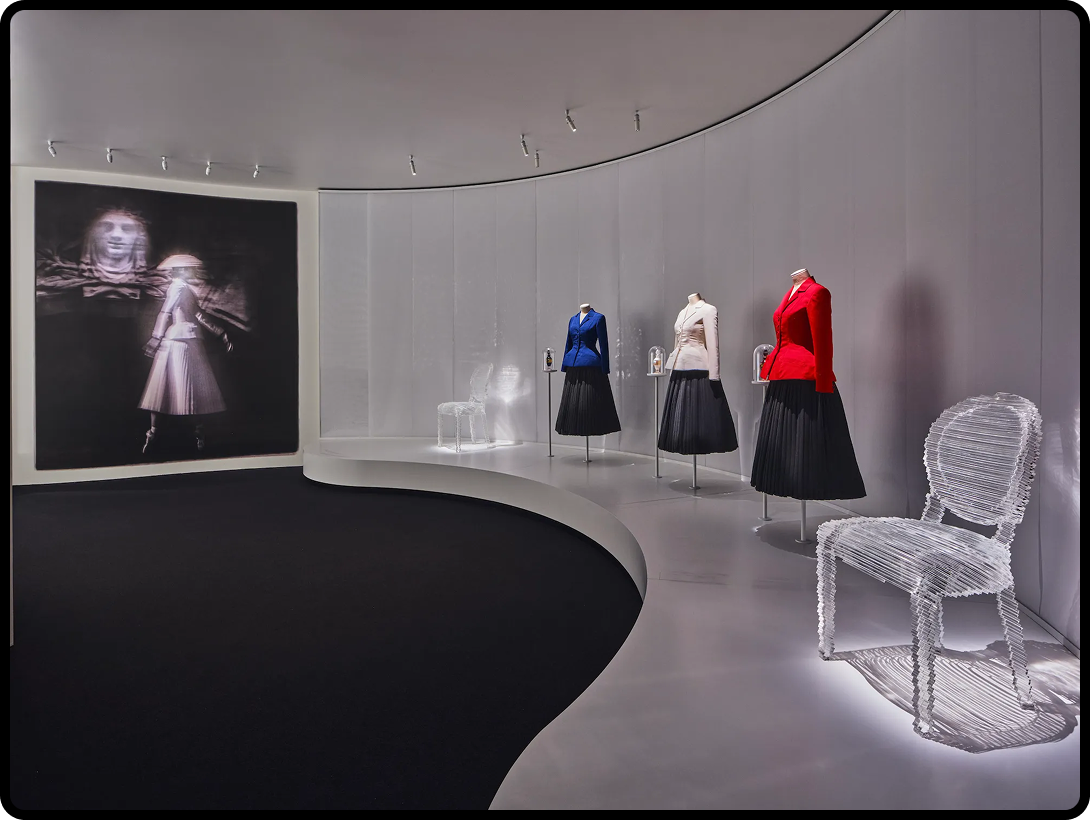
Dior offers a poetic homage to its heritage and connection with Japan. The exhibition includes three variations of the iconic Bar suit in blue, white, and red, alongside over 400 white toiles and 3D-printed perfume bottles. The scenography, designed by Nathalie Crinière, features works by Japanese designer Tokujin Yoshioka and photographs by Yuriko Takagi, celebrating the enduring ties between Dior and Japan.
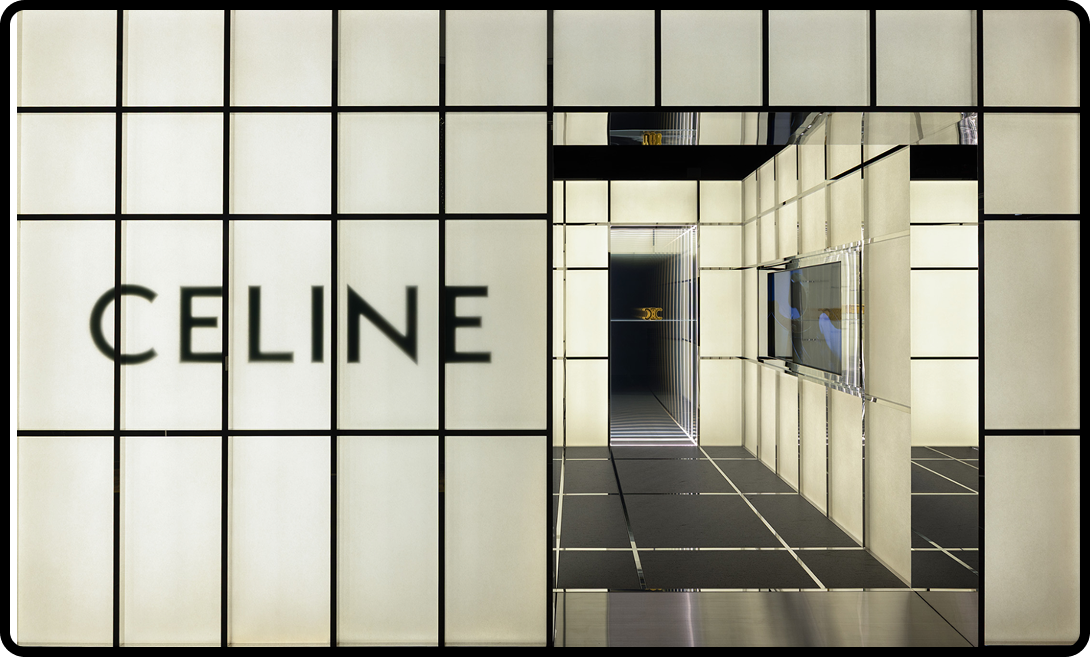
Celine presents the “Maki-e” exhibition, highlighting the ancient Japanese lacquerware technique. In collaboration with Japanese collective Hikoju Makie, Celine showcases Triomphe-themed lacquer artworks and exclusive bags blending French design with Japanese artistry. The exhibition also includes short films by visual artist Soshi Nakamura, exploring the intersection of heritage and contemporary expression.
Chaumet focuses on nature-inspired jewelry, drawing from motifs like wheat, bees, and honeycomb patterns to symbolize beauty and harmony. The exhibition underscores the maison’s commitment to blending natural inspiration with exquisite craftsmanship.
Moët Hennessy serves as the official hospitality partner, offering visitors an exclusive selection of wines and champagnes, further enhancing the cultural experience within the French Pavilion.
LVMH’s multifaceted engagement at the Expo, from architectural collaborations to the celebration of traditional crafts, demonstrates a commitment to authentic cultural exchange. By honoring Japanese heritage and integrating it with French luxury, LVMH sets a benchmark for meaningful and respectful cultural partnerships.
3. Dior’s Fall 2023 Collection in Mumbai, India
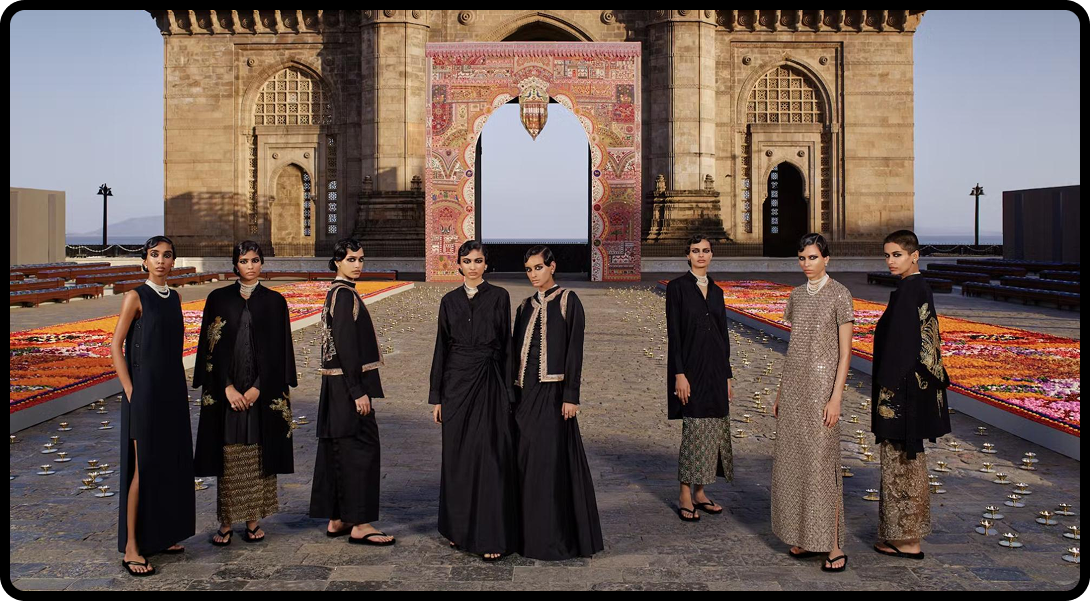
Dior’s Fall 2023 collection was presented in Mumbai, India, in a show staged at the Gateway of India. The event marked the first time a major European luxury house staged a full collection show in India outside of the typical fashion week circuit. Dior’s approach was rooted in a deep respect for Indian craftsmanship.
Creative director Maria Grazia Chiuri has worked with Mumbai-based atelier Chanakya for nearly three decades, long before her time at Dior. That bond was front and center in this show, which featured hand-embroidery techniques like zardozi, phulkari, kantha, and mirrorwork, brought to life by hundreds of artisans.
A striking example was the towering 46-foot “toran” arch at the runway entrance, made entirely by hand over 35,000 hours by women trained at the Chanakya School of Craft.
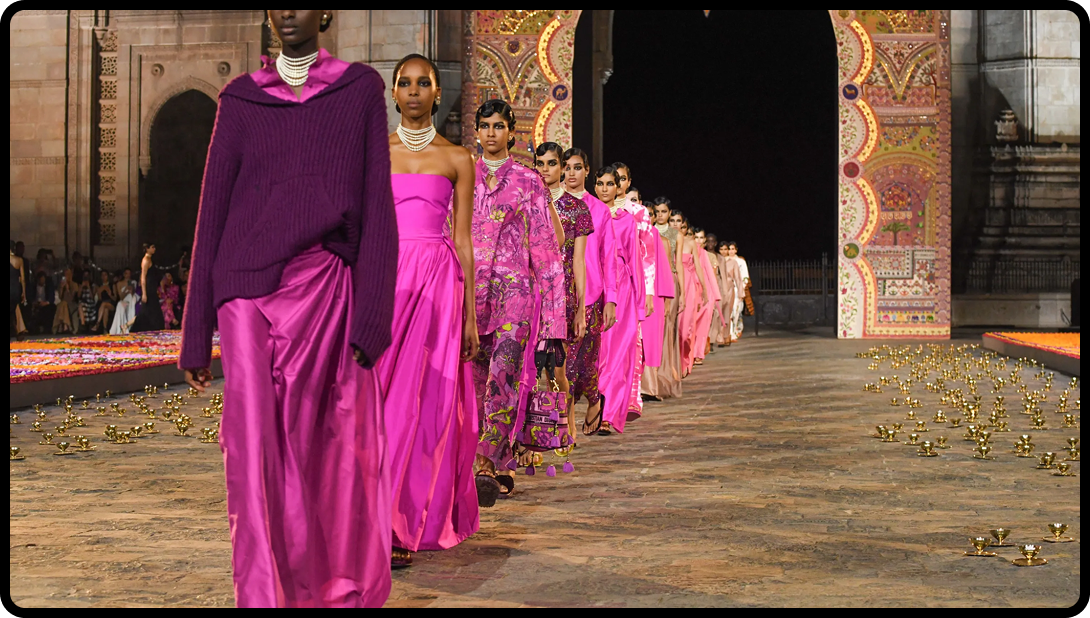
Aesthetically, the collection drew heavily from Indian textiles and silhouettes. It featured silks from Tamil Nadu, Nehru collars, and sari-style drapes—all the while infused with Dior’s classic sensibilities.
The runway itself was a love letter to Indian tradition, lined with marigold rangoli patterns and flickering oil lamps. Household names in India like Sonam Kapoor, Rekha, and Anushka Sharma sat alongside global names like Cara Delevingne and Simone Ashley, signaling India’s growing influence on the global luxury scene.
Dior’s Mumbai show worked because it wasn’t about trend-jacking or exoticizing a location, but a thoughtful, strategic, and long-term partnership. By centering Indian artisanship and honoring it in both design and production, Dior proved that cultural collaborations can be both respectful and commercially impactful.
4. Jentle Salon Pop-Up (Gentle Monster x Jennie Kim)
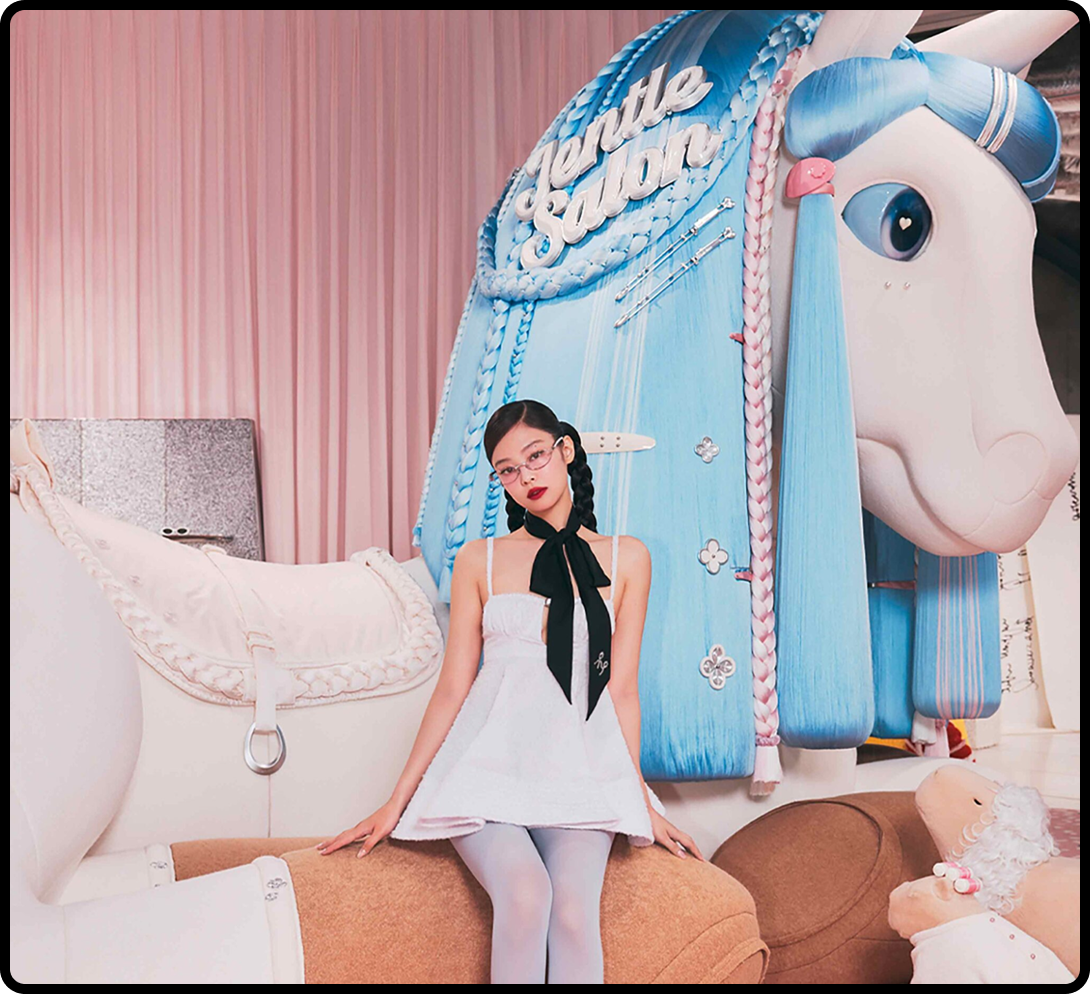
Korean eyewear brand Gentle Monster collaborated with BLACKPINK’s Jennie Kim for a worldwide Jentle Salon pop-up immersive world–a perfect blend of K-pop, soft and ethereal.
The Jentle Salon pop-up, launched in 2023, was a global activation that brought Jennie’s soft, surreal aesthetic to life across Seoul, Tokyo, Bangkok, Shanghai, and more. Designed as a dreamlike beauty salon, the spaces featured pastel interiors, floating blow dryers, and oversized hairbrush sculptures, all blending the Y2K-meets-modern-luxury vibe that defines both Jennie and Gentle Monster’s branding.

Visitors could interact with claw machines, take photo booth selfies, and explore limited-edition accessories inspired by Jennie’s own imagined beauty universe. The collection of eyewear and charms felt more like collectible art than product. The campaign was unmistakably Jennie—from the packaging to the in-store experience, every touchpoint felt like stepping into her curated world.
This campaign merged fan culture with high fashion. Jennie’s global influence brought massive foot traffic and social buzz, but Gentle Monster didn’t just slap her face on a poster, they gave her full creative direction. In doing so, they invited fans into a universe that was as interactive as it was aspirational. The result: long lines, sold-out drops, and a perfect example of how pop stars and brands can co-create cultural moments instead of just marketing them.
5. Nike N7 Collection Collaborates With Indigenous Designers
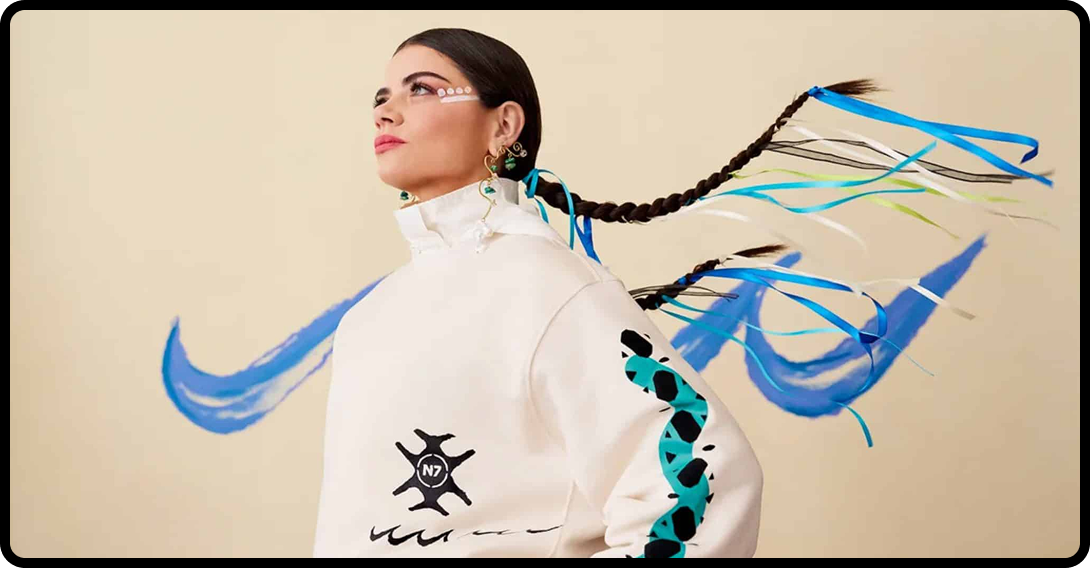
Nike’s N7 collection isn’t just a seasonal drop. It’s a long-running initiative that backs a clear mission: supporting Native American and Indigenous communities through sport. Since launching in 2009, N7 has contributed over $10 million to youth sports programs in Native communities. But in recent years, Nike has gone a step further: moving from symbolic support to direct collaboration with Indigenous creatives themselves.
Rather than drawing surface-level “inspiration” from Indigenous motifs, Nike’s latest N7 collections have been co-created with artists like Diné (Navajo) writer and director Tazbah Chavez and Haudenosaunee designer Elias Not Afraid.
These collaborations go beyond aesthetics—they’re rooted in real storytelling, from honoring ancestral traditions to celebrating the power of movement and cultural pride. Every garment, from embroidered jackets to graphic tees, reflects lived experience.
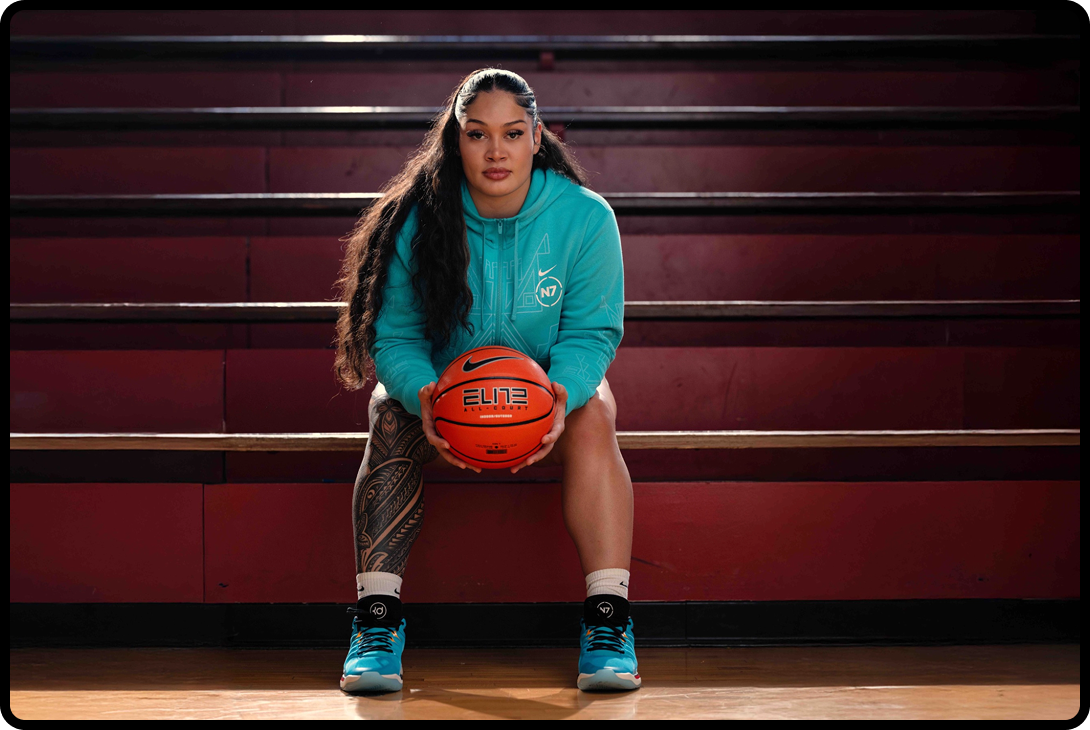
N7 is a long-term commitment grounded in trust, representation, and reinvestment. By centering Indigenous voices, Nike is setting a standard for what ethical, community-driven brand partnerships should look like. The N7 collections tell a story, elevate real voices, and support the next generation of Indigenous athletes.
Final Thoughts
The best brand partnerships don’t just follow culture—they participate in it meaningfully. Whether it’s Dior spotlighting Indian craftsmanship, Duolingo making Muslims feel seen during Eid, or Nike co-creating with Indigenous designers, these collaborations succeed because they go beyond aesthetics or clout. They’re rooted in respect, mutual benefit, and long-term engagement.
Cultural partnerships show authenticity by challenging how we see value, who we center, and what stories we let shape the mainstream. They don’t borrow culture, they build with it. And in doing so, they set a new bar for what it means to create with intention in today’s global, deeply connected world.
For brands, this means moving past trend-chasing. It means forming relationships early, listening to communities, and giving collaborators real creative control and not just featuring them in the final product. When done right, the result is not just a stronger campaign, but a deeper bond with the audiences who matter most.
As more consumers demand transparency, representation, and impact, cultural partnerships are no longer a nice-to-have, they’re a competitive advantage. The brands that lead will be the ones who understand culture isn’t a backdrop. It’s the main stage and it deserves the same care, nuance, and investment as anything else in the brand playbook.





